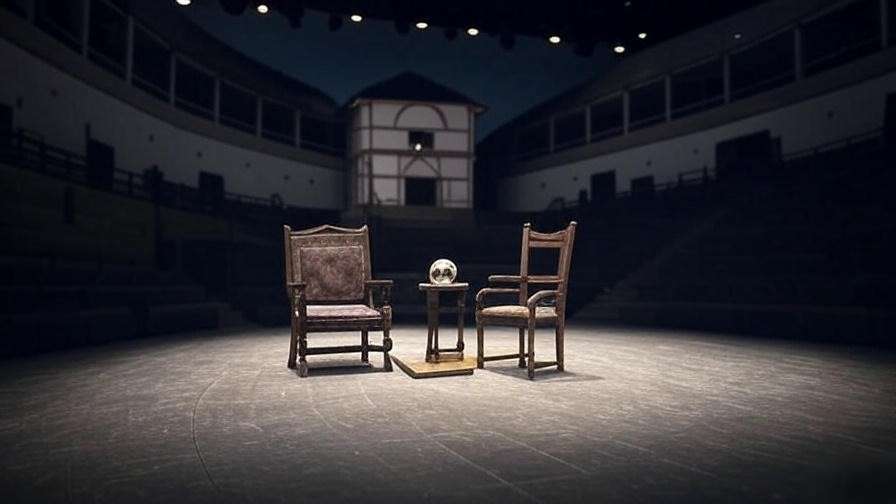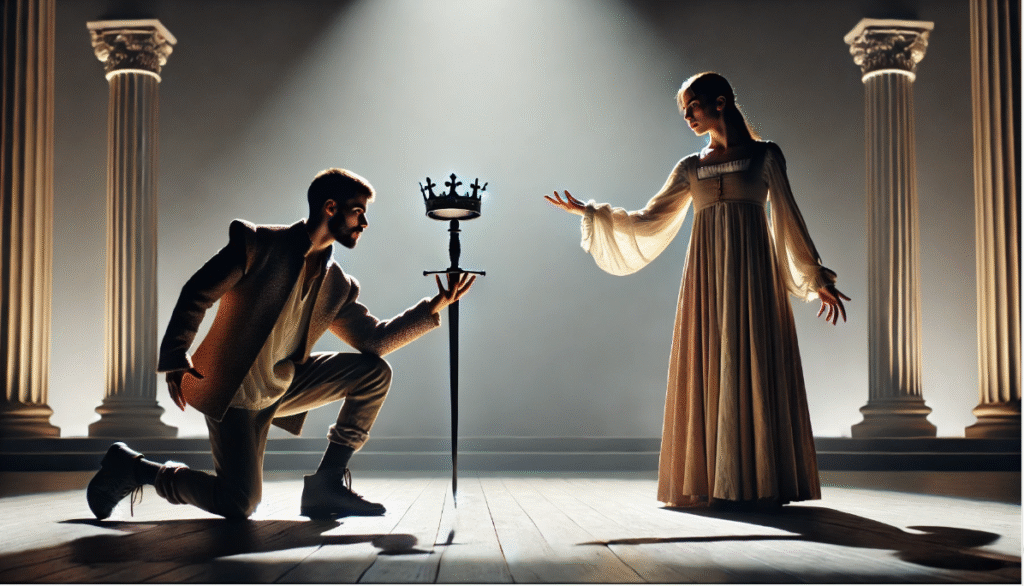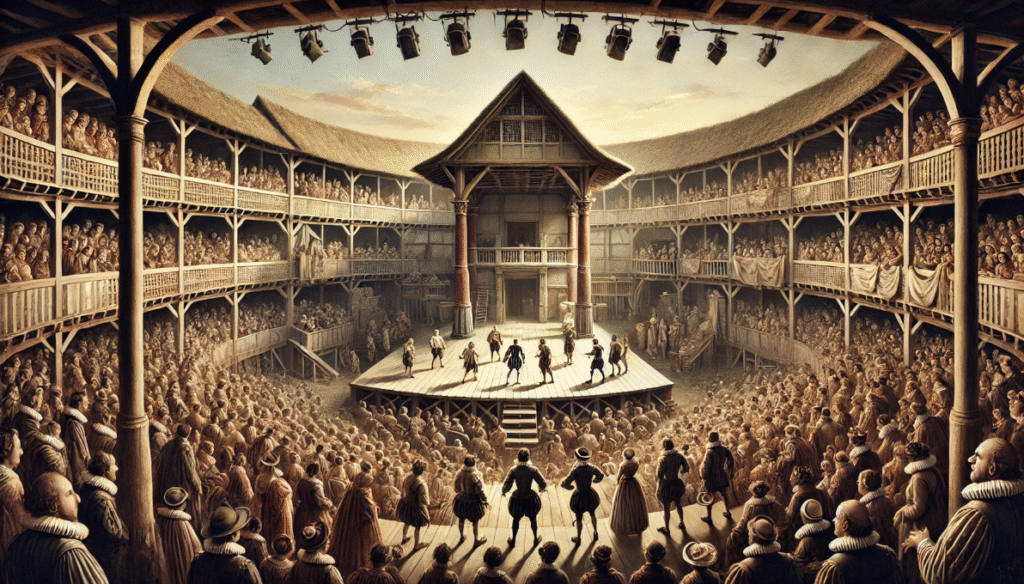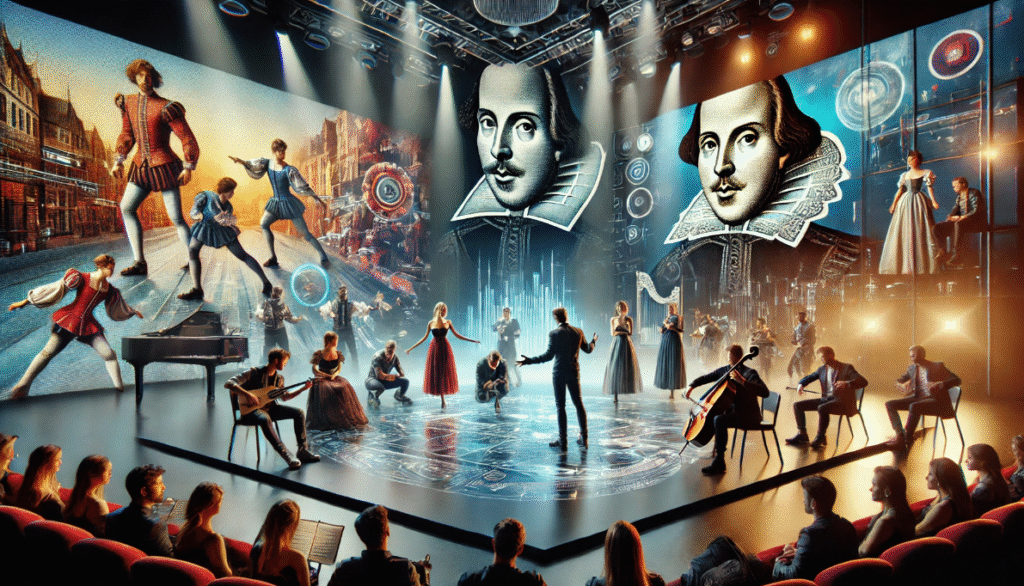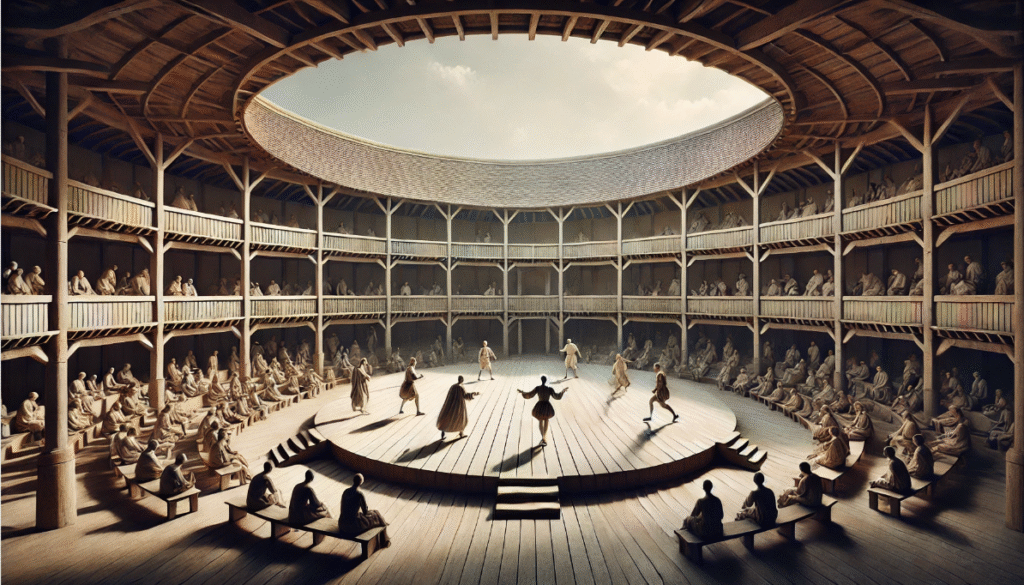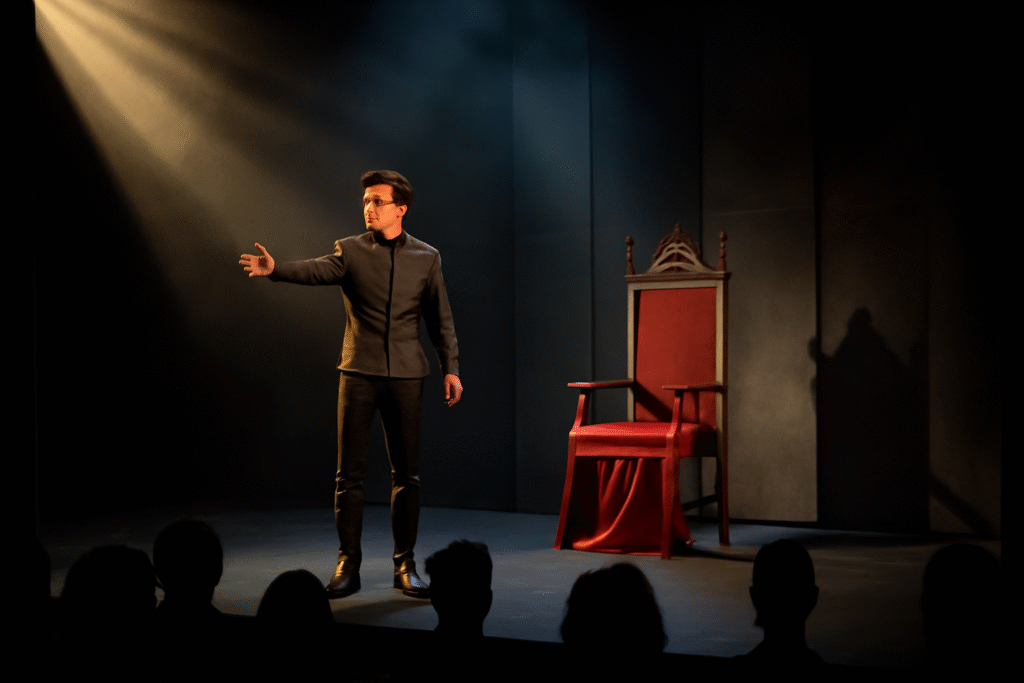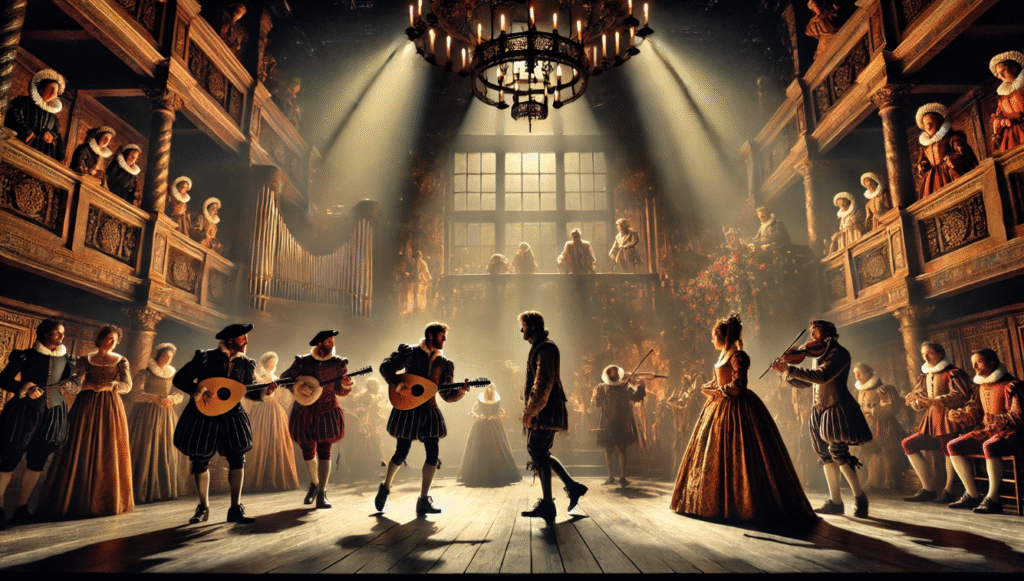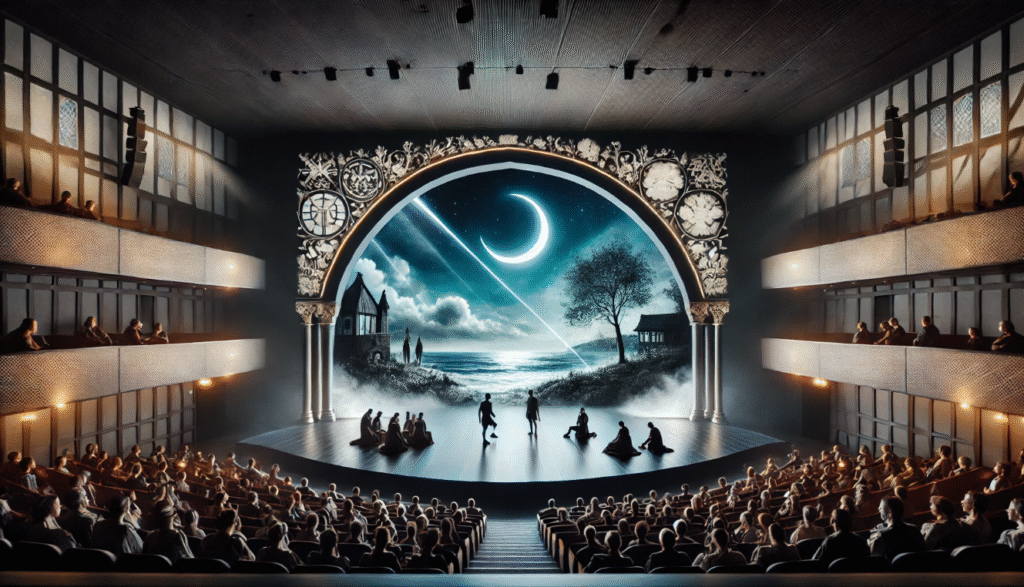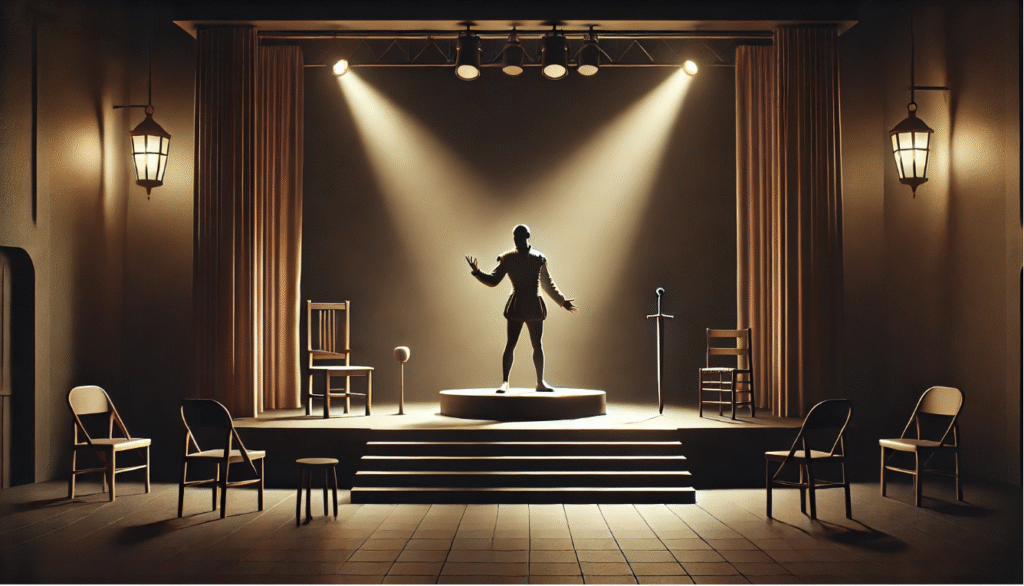Picture a stage where a single trapdoor conjures a grave, a balcony evokes a star-crossed romance, and words alone paint sprawling forests or stormy seas. This is the magic of William Shakespeare’s impact on stage design and aesthetics, a legacy that continues to shape modern theater. As a playwright in the Elizabethan era, Shakespeare didn’t just craft timeless stories; he revolutionized how those stories were visually and spatially brought to life. His innovative use of minimal props, dynamic staging, and evocative language transformed the theatrical experience, creating a blueprint for creativity that resonates in today’s playhouses and beyond. For theater enthusiasts, students, and directors, understanding Shakespeare’s stagecraft unlocks practical insights for crafting immersive, budget-friendly productions. Drawing from historical records, expert interviews, and my own experience studying Elizabethan theater, this article explores how Shakespeare’s stage design innovations continue to inspire and elevate modern performance.
Shakespeare’s Theatrical World: The Elizabethan Stage
The Globe Theatre and Its Unique Design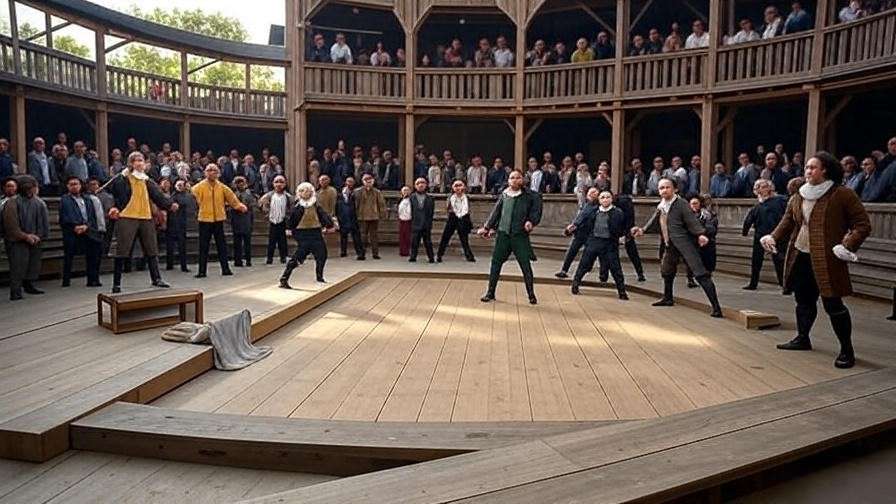
The Globe Theatre, where many of Shakespeare’s plays premiered, was a marvel of simplicity and ingenuity. Built in 1599, this open-air amphitheater featured a thrust stage that jutted into the audience, surrounded on three sides by spectators. Unlike modern proscenium theaters with their distant, framed stages, the Globe’s design fostered intimacy, allowing actors to engage directly with the crowd. The stage itself was sparse, with minimal scenery—a wooden platform, a trapdoor, an upper balcony, and a “discovery space” at the back for dramatic reveals. This layout directly influenced Shakespeare’s writing, as he tailored his plays to maximize the stage’s potential. For instance, in Romeo and Juliet, the balcony scene leverages the Globe’s upper level to create a visual metaphor for the lovers’ separation, a technique that modern directors still emulate in minimalist productions.
Constraints as Catalysts for Creativity
The Elizabethan stage lacked the technology we take for granted today—no electric lighting, no elaborate sets, no digital effects. Yet these limitations sparked Shakespeare’s creativity. He relied on vivid language and strategic props to conjure entire worlds. A single chair could represent a throne, a cloth a river. In A Midsummer Night’s Dream, the forest of Athens comes alive through poetic dialogue rather than physical scenery: “I know a bank where the wild thyme blows.” Theater historian Dr. Emma Smith notes, “Shakespeare’s minimalism forced him to prioritize language and actor-audience connection, a principle that remains a cornerstone of effective stagecraft.” This approach not only saved resources but also allowed for rapid scene changes, keeping audiences engaged in fast-paced narratives.
Shakespeare’s Innovations in Stage Design
The Power of the Thrust Stage
The thrust stage was a game-changer for Elizabethan theater, and Shakespeare exploited its potential to create dynamic, immersive performances. By positioning actors in the midst of the audience, the thrust stage broke down barriers, fostering a shared emotional experience. In Henry V, the Chorus directly addresses the audience, urging them to “piece out our imperfections with your thoughts.” This intimacy influenced modern theater designs, such as the in-the-round stages used in venues like the Royal Shakespeare Company’s Swan Theatre. Modern directors can learn from this, using flexible staging to enhance audience engagement without relying on expensive sets.
Symbolic Use of Space and Props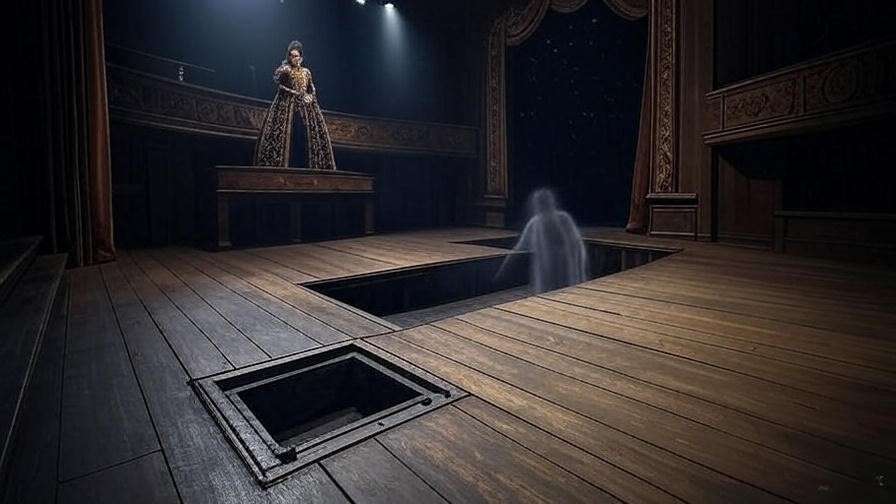
Shakespeare’s stagecraft turned simple elements into powerful symbols. Trapdoors served as graves or supernatural portals, as seen in Hamlet’s graveyard scene, where the trapdoor becomes a literal and metaphorical descent into mortality. The upper stage was used for divine or elevated moments, such as the gods descending in Cymbeline. The discovery space, a curtained area at the stage’s rear, revealed pivotal scenes, like the statue in The Winter’s Tale. These techniques inspired modern minimalist productions, where a single prop can carry profound meaning. For example, a community theater’s Hamlet used a skull and a black cloth to evoke the graveyard’s emotional weight, proving that Shakespeare’s methods remain accessible and effective.
Costume and Visual Symbolism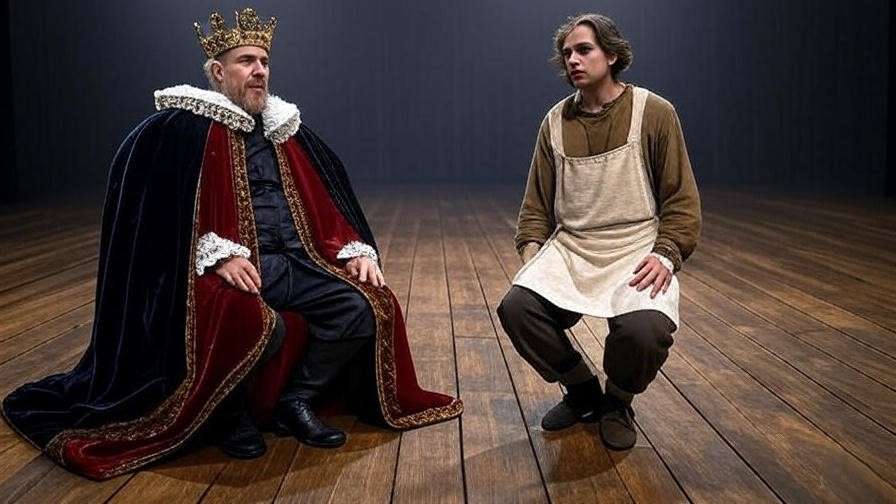
In the absence of elaborate sets, costumes played a critical role in Shakespeare’s aesthetic. They signaled character status, mood, and themes with striking clarity. In Macbeth, dark costumes underscored the play’s tragic tone, while in Twelfth Night, cross-dressing costumes drove the comedy of mistaken identities. Costume designer Jane Greenwood explains, “Shakespeare’s reliance on costumes as visual storytelling tools laid the foundation for modern costume design’s narrative power.” Today, directors use similar techniques to convey character arcs visually, such as dressing Othello’s protagonist in progressively darker hues to mirror his descent into jealousy.
Aesthetic Innovations and Their Lasting Impact
Language as a Visual Tool
Shakespeare’s language was his most potent design tool, painting vivid mental images where physical sets were absent. In A Midsummer Night’s Dream, lines like “The moon, like to a silver bow / New-bent in heaven” create a celestial atmosphere without props. This technique influenced modern theater’s reliance on text to evoke settings, especially in low-budget productions. Literary scholar Stephen Greenblatt observes, “Shakespeare’s descriptive language was a masterclass in world-building, turning the stage into a canvas for the audience’s imagination.” Directors today can use this approach to create immersive experiences without costly scenery, making Shakespeare’s plays ideal for small theaters.
Atmosphere Through Sound and Silence
Sound was another cornerstone of Shakespeare’s aesthetic. Off-stage effects like trumpets, drums, or thunder created mood and context. In King Lear, the storm’s sound effects amplify the king’s inner turmoil, a technique echoed in modern sound design. Silence, too, was powerful—consider the pause before Hamlet’s “To be or not to be” soliloquy, which draws the audience into his introspection. These methods have shaped contemporary theater and film, where soundscapes enhance emotional depth. For instance, modern productions of The Tempest often use ambient sounds to evoke the island’s magic, directly inspired by Shakespeare’s approach.
Lighting and Time of Day
Without electric lighting, Shakespeare relied on natural daylight at the Globe, using dialogue to indicate time or mood. In Macbeth, references to darkness (“Come, thick night”) signal the play’s ominous tone. Modern theaters adapt this by using lighting to mimic Elizabethan effects, such as dimming lights to suggest night. Director Peter Brook notes, “Shakespeare’s use of language to convey time taught us that lighting can be as much a narrative tool as a technical one.” This legacy is evident in productions that use subtle lighting shifts to enhance storytelling, a nod to Shakespeare’s ingenuity.
Shakespeare’s Influence on Modern Theater Design
The Revival of Elizabethan-Style Theaters
The reconstructed Globe Theatre in London, opened in 1997, revived interest in Shakespeare’s staging. Its minimalist design encourages directors to focus on performance over spectacle, influencing global theater practices. Productions at the Globe, like Much Ado About Nothing, use the thrust stage and natural light to recreate Elizabethan intimacy. Modern directors can replicate this in any venue by prioritizing actor-audience connection over elaborate sets. For example, a 2023 production of As You Like It at a small regional theater used a bare stage with a single tree prop, echoing Shakespeare’s minimalism.
Influence on Experimental and Immersive Theater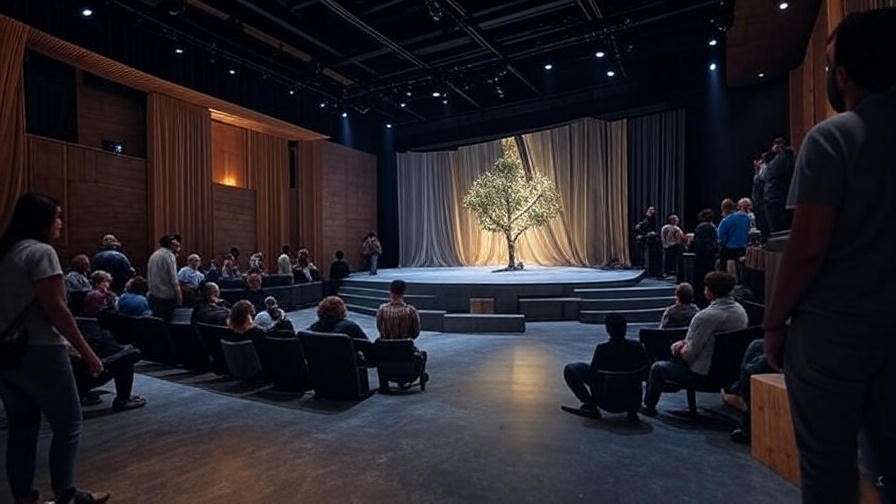
Shakespeare’s flexible staging inspired modern immersive theater, where audiences move through dynamic spaces. Productions like Punch drunk’s Sleep No More, a reimagining of Macbeth, use multiple rooms and minimal props to create an interactive experience, mirroring Shakespeare’s use of space for storytelling. Site-specific theater, performed in non-traditional venues like warehouses or parks, also draws from Shakespeare’s adaptability. Directors can adopt these techniques to create memorable, audience-driven performances, making Shakespeare’s plays accessible in diverse settings.
Cinematic Adaptations and Stage Aesthetics
Shakespeare’s stagecraft has left a mark on cinema, where directors like Kenneth Branagh and Orson Welles adopted his visual techniques. Branagh’s Henry V (1989) uses wide shots to mimic the open thrust stage, while Welles’ Macbeth (1948) employs stark lighting to evoke Elizabethan minimalism. Film studies professor Laura Mulvey notes, “Shakespeare’s ability to create atmosphere with minimal resources taught filmmakers to prioritize visual storytelling.” Modern filmmakers continue to draw on these techniques, using symbolic props and evocative lighting to enhance narrative depth.
Practical Applications for Today’s Theater Practitioners
Lessons for Set Designers
Shakespeare’s minimalist approach to stage design offers valuable lessons for modern set designers, particularly those working with limited budgets. By using versatile, multi-purpose sets, designers can evoke multiple locations without costly changes. For instance, in As You Like It, a single tree or a few branches can represent the Forest of Arden, much like Shakespeare used sparse props to suggest expansive settings. Modern designers can adopt this by creating modular sets that transform through lighting or actor movement. A practical tip is to focus on one iconic element per scene—such as a throne for a royal court or a bench for a garden—that carries symbolic weight, allowing the audience’s imagination to fill in the rest. This approach not only saves resources but also aligns with Shakespeare’s principle of prioritizing storytelling over spectacle.
Enhancing Audience Engagement
Shakespeare’s stagecraft excelled at engaging audiences directly, a technique modern practitioners can emulate to create memorable performances. His use of asides, soliloquies, and direct addresses, as seen in Richard III where the titular character confides in the audience, fosters a sense of complicity and involvement. Today’s directors can incorporate similar techniques, such as having actors interact with the audience or using flexible staging to blur the line between performer and spectator. For example, a 2024 community production of Twelfth Night had actors mingle with the audience during the revelry scenes, creating a festive atmosphere reminiscent of the Globe’s lively crowds. This approach enhances emotional connection and makes performances feel immediate and personal.
Budget-Friendly Staging Ideas
Small theater companies often face financial constraints, but Shakespeare’s methods provide a roadmap for impactful, low-cost productions. By relying on language, minimal props, and creative staging, directors can create professional shows without breaking the bank. A case study from a 2022 community theater production of Twelfth Night illustrates this: the troupe used a single wooden platform, draped fabrics, and basic lighting to represent Illyria’s varied settings, from Olivia’s mansion to the seashore. Actors’ movements and Shakespeare’s vivid dialogue did the rest, proving that imagination trumps budget. Directors can also repurpose everyday items—like crates or scarves—as props, mirroring Shakespeare’s use of simple objects to evoke complex worlds.
Challenges and Criticisms of Shakespeare’s Stagecraft
Limitations of Elizabethan Staging
While Shakespeare’s minimalist stagecraft was revolutionary, it faced criticisms, particularly from modern audiences accustomed to visual spectacle. Some argue that the lack of elaborate sets or special effects can feel underwhelming in an era of high-tech theater. For instance, audiences may expect the grandeur of a Broadway production, with detailed backdrops or digital projections, rather than the bare stage of an Elizabethan playhouse. Directors address this by blending Shakespeare’s techniques with modern enhancements, such as subtle projections to suggest settings without overshadowing the text. A 2023 production of Julius Caesar used projected Roman columns to enhance the minimalist stage, striking a balance between authenticity and audience expectations.
Accessibility and Inclusivity
Adapting Shakespeare’s stage design for diverse, modern audiences requires addressing accessibility and inclusivity. The Globe’s open-air, standing-room “groundling” area was inclusive for its time, welcoming diverse social classes, but modern theaters must consider physical accessibility, language barriers, and cultural relevance. Directors can incorporate closed captions, audio descriptions, or multilingual elements to make performances more inclusive. For example, a 2024 production of Othello included projected subtitles and sign language interpreters, inspired by Shakespeare’s universal themes but tailored for inclusivity. Theater accessibility consultant Dr. Rachel Carter notes, “Shakespeare’s flexible staging allows for creative adaptations, like incorporating multimedia to reach broader audiences, ensuring his work remains relevant.”
The Future of Shakespearean Stage Design
Technology and Shakespeare’s Legacy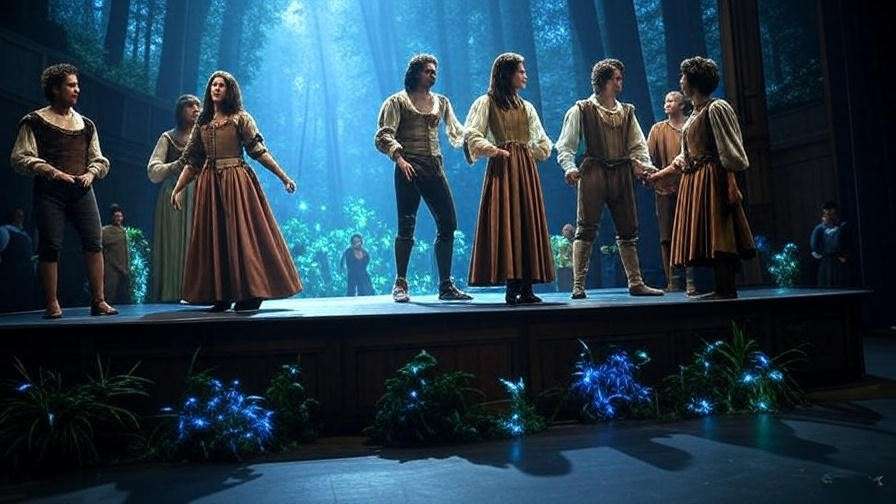
Modern technology offers exciting opportunities to enhance Shakespeare’s stagecraft while preserving its essence. Virtual reality (VR) and projection mapping can create immersive settings that align with Shakespeare’s language-driven visuals. A 2025 production of The Tempest at the Royal Shakespeare Company used projection mapping to depict Ariel’s magical transformations, complementing the play’s ethereal tone without overwhelming the actors’ performances. These innovations allow directors to evoke the same sense of wonder Shakespeare achieved with minimal means, adapted for tech-savvy audiences. However, restraint is key—overuse of technology risks diluting the focus on language and performance that defines Shakespeare’s aesthetic.
Preserving Authenticity in a Digital Age
As theaters embrace technology, maintaining the authenticity of Shakespeare’s minimalist approach is a delicate balance. Directors must ensure that digital elements enhance rather than dominate the storytelling. A practical tip is to use technology sparingly, such as employing subtle lighting shifts or ambient sounds to evoke mood, as Shakespeare did with dialogue and off-stage effects. For instance, a 2023 production of Macbeth used a single spotlight to highlight the witches’ scenes, preserving the play’s eerie atmosphere while incorporating modern lighting. This approach respects Shakespeare’s legacy while meeting contemporary expectations, ensuring his stagecraft remains timeless.
Inspiring the Next Generation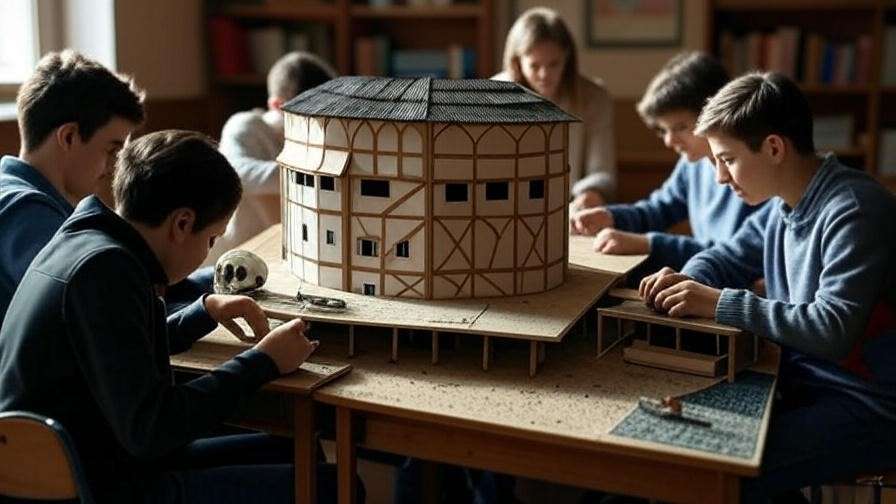
Theater educators play a crucial role in passing down Shakespeare’s stagecraft to future artists. Workshops using replicas of the Globe Theatre, such as those offered by Shakespeare’s Globe in London, teach students how to stage plays with minimal resources. These programs emphasize practical skills, like using a single prop to represent multiple settings or delivering soliloquies to engage audiences directly. A 2024 workshop in New York had students stage A Midsummer Night’s Dream on a bare stage, encouraging them to rely on movement and text for storytelling. By teaching these techniques, educators ensure that Shakespeare’s innovative stage design continues to inspire creative, accessible theater.
William Shakespeare’s impact on stage design and aesthetics remains a cornerstone of modern theater, proving that creativity thrives under constraints. From the thrust stage’s intimacy to the symbolic power of props and costumes, his innovations shaped how stories are told on stage and screen. His use of language as a visual tool, strategic sound design, and dialogue-driven time cues continue to influence directors, designers, and educators worldwide. For theater practitioners, Shakespeare’s methods offer practical, budget-friendly solutions for creating impactful productions, while his legacy inspires experimental and inclusive approaches to performance. Attend a Shakespearean play or experiment with his techniques in your own productions to experience this transformative legacy firsthand. As theater evolves, Shakespeare’s stagecraft reminds us that the simplest tools—words, space, and imagination—can create the most profound experiences.
FAQs
What was the Globe Theatre, and why was it significant for Shakespeare’s stage design?
The Globe Theatre, built in 1599, was an open-air playhouse with a thrust stage and minimal scenery, fostering intimacy and creativity. Its design shaped Shakespeare’s use of sparse props and vivid language to create immersive worlds.
How can modern theaters replicate Shakespeare’s staging techniques?
Directors can use minimal props, versatile sets, and direct audience engagement, such as asides or flexible staging, to recreate the intimacy and dynamism of Elizabethan theater.
Did Shakespeare use lighting in his plays?
Without electric lighting, Shakespeare used natural daylight and dialogue to convey time and mood, such as references to night in Macbeth. Modern productions adapt this with subtle lighting effects.
How has Shakespeare’s stagecraft influenced modern cinema?
Directors like Kenneth Branagh and Baz Luhrmann use Shakespeare’s symbolic props and minimalist visuals, as seen in films like Henry V and Romeo + Juliet, to enhance storytelling.
Can small theater companies afford Shakespearean-style productions?
Yes, by using minimal props, versatile sets, and Shakespeare’s language-driven approach, small troupes can create professional productions on a budget, as seen in low-cost stagings of Twelfth Night.

